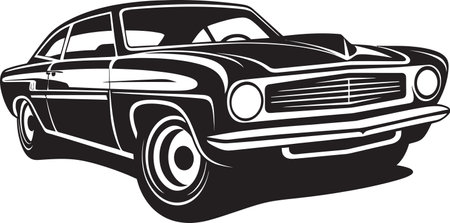1. The Origins of American Motorsports
Motorsports in the United States have a rich and fascinating history that dates back to the late 19th and early 20th centuries. As automobiles became more common, people began testing their speed and endurance, leading to the birth of organized racing events. These early competitions laid the foundation for the thriving motorsports culture seen in the country today.
The First Organized Races
The first recorded automobile race in the United States took place on November 28, 1895, in Chicago, Illinois. Known as the Chicago Times-Herald race, this event covered a 54-mile course from Chicago to Evanston and back. Six cars participated, and Frank Duryea won the race with an average speed of 7.5 mph.
Early Racing Events
As interest in competitive racing grew, more organized races began appearing across the country. Some of the most notable early races included:
| Race Name | Year | Location | Significance |
|---|---|---|---|
| Chicago Times-Herald Race | 1895 | Chicago, IL | First recognized automobile race in the U.S. |
| Vanderbilt Cup | 1904 | Long Island, NY | First major international race in America |
| Indianapolis 500 | 1911 | Indianapolis, IN | Established as one of the greatest races in history |
The Birth of Competitive Racing Culture
As racing gained popularity, manufacturers began using these events as proving grounds to test the speed and reliability of their vehicles. Wealthy individuals and entrepreneurs invested in race teams, further fueling competition. The early 20th century saw the rise of dedicated racetracks, designed to host races safely and accommodate growing crowds of spectators.
Impact on American Automotive Development
Motorsports played a crucial role in pushing innovation in the automotive industry. Engineers and automakers experimented with aerodynamics, engine performance, and tire technology, leading to advancements that would later benefit consumer vehicles.
Key Innovations Driven by Early Racing
- Improvements in engine efficiency and durability
- Development of safer braking systems
- Enhanced aerodynamics for better performance
- Introduction of high-performance tires
The origins of American motorsports laid the groundwork for what would become one of the most thrilling and influential aspects of automotive culture. From early endurance races to high-speed competitions, these events captured the spirit of innovation and competition that continues to define motorsports today.
2. The Rise of Stock Car and Oval Track Racing
Stock car racing has deep roots in American culture, emerging from the backroads and moonshine runners of the early 20th century. It eventually evolved into one of the most popular motorsports in the country, with NASCAR leading the charge. The development of oval track racing and the rise of professional stock car events fundamentally shaped American motorsports and car culture.
The Birth of Stock Car Racing
In the early days, stock car racing was an underground activity. During Prohibition, moonshine runners modified their cars for speed and handling to evade law enforcement. These modified cars laid the foundation for early stock car racing competitions, which took place on dirt tracks and fairgrounds across the southern United States.
The Founding of NASCAR
In 1948, Bill France Sr. founded the National Association for Stock Car Auto Racing (NASCAR) to bring structure and legitimacy to stock car racing. The sport quickly gained popularity, with races held on both paved and dirt oval tracks. Daytona Beach, Florida, became a hub for stock car racing, leading to the construction of the Daytona International Speedway in 1959.
Growth and Popularity
As NASCAR grew, so did its fan base and influence. By the 1970s and 1980s, television broadcasts brought the sport to a national audience. The rise of legendary drivers like Richard Petty, Dale Earnhardt, and Jeff Gordon helped solidify NASCAR as a mainstream sport. Advances in technology, sponsorships, and safety measures further propelled its popularity.
Key Milestones in NASCARs Evolution
| Year | Milestone |
|---|---|
| 1948 | Formation of NASCAR |
| 1959 | Opening of Daytona International Speedway |
| 1979 | First live flag-to-flag TV broadcast of the Daytona 500 |
| 2001 | Tragic passing of Dale Earnhardt, leading to major safety improvements |
| 2020 | NASCAR bans Confederate flag at events, signaling cultural shift |
The Influence on American Car Culture
NASCAR and stock car racing have had a lasting influence on American car culture. Automakers like Ford, Chevrolet, and Dodge have used the sport to showcase their performance capabilities, leading to the “win on Sunday, sell on Monday” philosophy. Racing innovations in aerodynamics, safety, and engine performance have also trickled down into consumer vehicles.
Fan Engagement and Regional Impact
Stock car racing is particularly strong in the South, where it has become a way of life for many fans. The sport has helped shape the identity of numerous towns and regions, creating traditions such as tailgating at race events and traveling long distances to watch races in person.
As NASCAR and other stock car series continue to evolve, they remain a defining aspect of American motorsports, blending speed, competition, and cultural tradition.

3. Three, The Open-Wheel Revolution: IndyCar and Formula Racing
Open-wheel racing has played a massive role in shaping American motorsports. Unlike stock cars, open-wheel cars have exposed wheels and are known for their aerodynamic designs and incredible speeds. Among the various open-wheel series, IndyCar has dominated the U.S. racing scene, with Formula racing also making its mark.
The Rise of IndyCar Racing
IndyCar has its roots in the early 20th century, with events like the Indianapolis 500 becoming legendary. The IndyCar Series, in its modern form, evolved out of various American open-wheel championships, eventually consolidating into what we know today.
Significance of the Indianapolis 500
The Indianapolis 500, often called “The Greatest Spectacle in Racing,” is one of the most prestigious events in motorsports. It has contributed to the development of racing technology and has been a proving ground for legendary drivers.
Key Indianapolis 500 Achievements
| Accomplishment | Details |
|---|---|
| First Race | 1911, won by Ray Harroun |
| Most Wins | 4 wins – A.J. Foyt, Al Unser Sr., Rick Mears, and Hélio Castroneves |
| Fastest Lap | 237.498 mph (Arie Luyendyk, 1996) |
| Largest Crowd | Over 300,000 attendees |
Formula Racings Influence in the U.S.
While Formula 1 has long been considered a more international racing series, it has gained a strong following in the United States. The U.S. Grand Prix and races in Miami and Las Vegas have helped bring global open-wheel racing to American audiences.
Comparing IndyCar and Formula 1
Despite both being open-wheel series, IndyCar and Formula 1 are quite different. Here’s how they compare:
| Category | IndyCar | Formula 1 |
|---|---|---|
| Race Tracks | Ovals, road courses, and street circuits | Street circuits and road courses |
| Speed | Around 230+ mph (on ovals) | Around 220 mph |
| Car Design | Spec chassis and engine selection | Teams design their own chassis and use FIA-approved engines |
| Prestige | Indianapolis 500 | Monaco Grand Prix |
The Impact of Open-Wheel Racing on American Motorsports
Open-wheel racing, particularly IndyCar, has helped establish the U.S. as a major force in motorsports. With events like the Indy 500 drawing worldwide attention, American open-wheel racing remains a cornerstone of the racing world.
4. Four, The Expansion into Drag Racing and Road Courses
As American motorsports evolved, it expanded beyond oval tracks into drag racing and road course events. This shift introduced thrilling new challenges, pushing both drivers and manufacturers to innovate.
The Rise of NHRA Drag Racing
Drag racing became a popular motorsport in the 1950s, thanks to the formation of the National Hot Rod Association (NHRA) in 1951. The NHRA helped organize and regulate drag racing, making it a professional and widely recognized sport.
Key Milestones in NHRA Drag Racing
| Year | Event |
|---|---|
| 1951 | NHRA founded by Wally Parks |
| 1963 | First NHRA Nationals televised |
| 1970 | Introduction of the Funny Car class |
| 1990s | Top Fuel Dragsters exceed 300 mph |
Drag racings appeal comes from its raw speed and power. Races are typically completed in just a few seconds, with cars producing over 10,000 horsepower and hitting speeds exceeding 330 mph.
Endurance Racing and Road Course Events
While drag racing focused on straight-line speed, endurance racing and road courses emphasized handling, driver skill, and teamwork. Endurance races test both car reliability and driver stamina over long distances.
Major American Endurance Races
- Rolex 24 at Daytona: A 24-hour race at Daytona International Speedway, requiring teams to maintain high speeds for a full day.
- 12 Hours of Sebring: A grueling endurance race held in Florida, known for its bumpy track that challenges both cars and drivers.
- Petit Le Mans: A 10-hour endurance race in Georgia, featuring top sports cars and intense competition.
Alongside endurance racing, American motorsports embraced road course events that featured twists, elevation changes, and demanding technical turns. Tracks like Watkins Glen and Laguna Seca became legendary for their unique layouts and storied histories.
The Diversity in American Motorsports
With the rise of NHRA drag racing and road course events, American motorsports became more diverse. Fans could enjoy various types of racing, from quarter-mile drag strips to endurance battles lasting all day. This expansion not only broadened the fan base but also pushed technological advancements in automotive engineering.
5. Five. The Modern Era and Future of American Motorsports
Analyzing the Current State of Motorsports in America
American motorsports have evolved tremendously over the past few decades. Today, NASCAR, IndyCar, and drag racing continue to dominate the scene, drawing millions of fans each year. However, the motorsports landscape is also changing due to shifts in audience preferences, environmental concerns, and technological advancements. Leagues and race organizers are adapting to keep the sport exciting and relevant in modern times.
Technological Advancements in Racing
Technology has always played a crucial role in motorsports, but recent innovations have transformed the way teams and drivers approach racing. Advancements in aerodynamics, tire technology, engine efficiency, and data analytics have pushed racing to new levels of performance. Hybrid powertrains and alternative fuels are also being explored to make racing more sustainable.
Key Technological Advancements in American Motorsports
| Technology | Impact on Racing |
|---|---|
| Aerodynamics | Improves vehicle downforce and speed |
| Hybrid Powertrains | Increases efficiency while maintaining performance |
| Data Analytics | Enhances race strategies and driver performance |
| Advanced Safety Features | Reduces risk and increases driver protection |
The Rise of Electric Racing
With the world moving toward sustainability, electric racing has gained significant traction. Formula E, an all-electric racing series, has grown in popularity and has influenced traditional motorsports. Even NASCAR and IndyCar are exploring hybrid and electric technology for future series. These new electric developments aim to maintain the thrill of racing while reducing the environmental impact.
The Future of Motorsports in America
The future of American motorsports will likely see a balance between tradition and innovation. While classic racing formats will continue to thrive, new formats such as autonomous racing and further electrification will shape the industrys direction. Fan engagement will also evolve with digital experiences, virtual reality, and interactive online platforms.
Potential Changes in the Future of Motorsports
- Increased adoption of hybrid and electric race cars
- Enhanced safety measures through AI and real-time analytics
- Integration of virtual reality for immersive fan experiences
- More sustainable racing events with reduced carbon footprints
American motorsports remain a thrilling spectacle, and as new technology develops, the excitement for racing fans will only grow. By embracing innovation while honoring tradition, the future of racing will continue to captivate audiences for generations to come.


